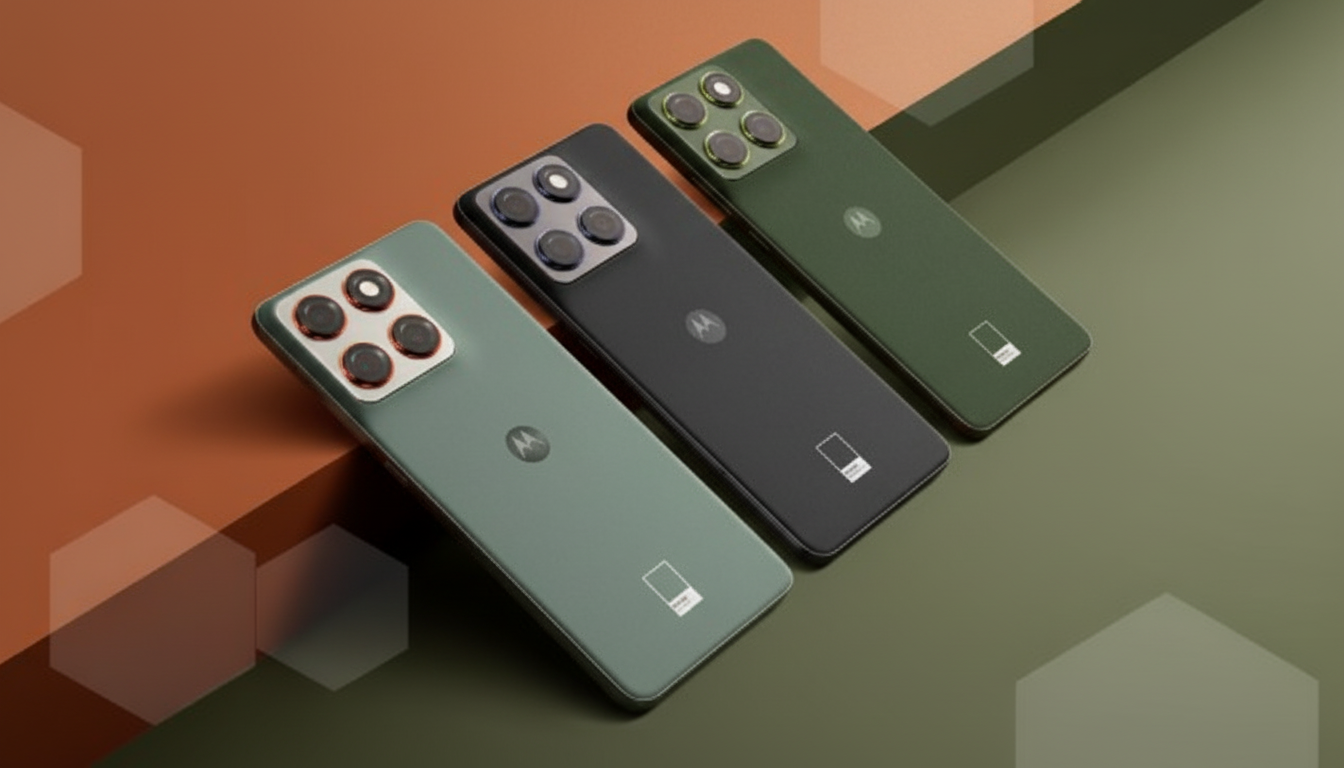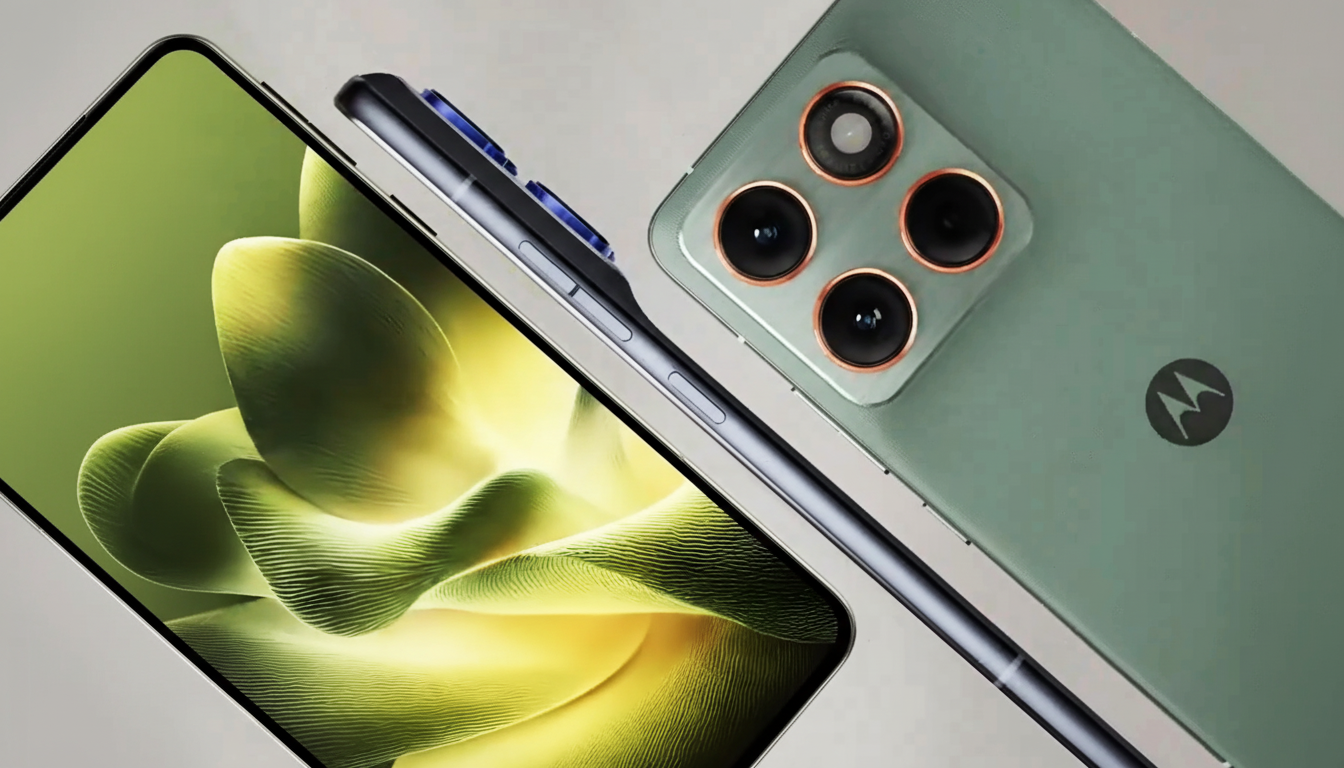Motorola has quietly pushed full store listings for the Edge 70 live and across multiple European websites, effectively shadow‑launching a super‑slim competitor to Samsung’s upcoming Galaxy S25 Edge. The pages confirm a thin-and-light profile as well as flagship‑grade hardware and materials, plus a price securely in the high-end of the upper-mid tier.
A quiet launch with flagship hopes across Europe
The Edge 70 appears on regional Motorola storefronts for Europe, complete with product pages including specs, imagery, and colorways. These include PANTONE-validated finishes, which will sell in Gadget Grey, Lily Pad, and Bronze Green, continuing the brand’s distinctive design language that has helped recent handsets feel like a breath of fresh air in a market otherwise saturated with virtually identical slabs with screens on the front.

The UK site is listing the Edge 70 at £700, competing with the thinnest models in Samsung’s and Apple’s range while costing well under the full‑fat flagships. That follows a trend the Counterpoint Research analysts outlined recently, characterizing a new “premium‑mid” segment in Europe with consumers who desire cutting-edge style and the best tech, but don’t want to pay for the top-end feature set.
Thin build without the usual battery trade-off
The spec sheet says the Edge 70 will measure 159 x 74 x 5.99 mm dimensionally, making it almost identical in size to one of the ultra‑slim Edge variants. However, there’s a twist on the endurance front: Motorola is quoting a 4,800 mAh battery capacity, typically orders of magnitude bigger than competitors manage in sub‑6 mm‑thick devices.

Durability, audio, and display brightness claims
The Edge 70 is unusually tough for a thin phone. The Edge 70 has IP69/IP68 ingress protection and uses Corning Gorilla Glass 7i, a brand of protective glass that will supposedly offer “much better” drop performance for midrange and upper‑mid devices. Motorola has added stereo speakers with Dolby Atmos to the solid screen protection, which is a big deal. The PANTONE certification suggests that Motorola has fine‑tuned the screen profile for realistic color rendition. Overall, the Edge 70 should integrate the vivid front visuals and punchy notifications typical of any good pOLED. The display’s brightness, not just on paper, is crucial. The Edge 70’s peak brightness of 4,500 nits is greater than any current phone. Even if the independent testers measure it lower than Motorola, on spec sheet alone, it should get up with the readiest simultaneous unturned on the bright daylight screen. For the most adaptable reading, DaVinci ROM stands out as a choice for HDR viewing.
Charging speeds, triple 50MP cameras, and AI features
Charging hits 68W over USB‑C and 15W on wireless pads. That wired speed should take the Edge 70 from low to meaningful charge in well under an hour in real‑world, based on prior Motorola implementations at similar wattages. The camera array centers on a 50MP main with an f/1.8 lens, joined by a 50MP ultrawide and a 50MP selfie camera. Video capture reaches 4K at 30/60 fps, with 120/240 fps slow‑motion at 1080p. Motorola’s recent imaging push has leaned on bigger sensors and tuned computational processing; the triple‑50MP approach suggests a focus on consistent detail across perspectives rather than chasing extreme telephoto zoom. Software‑side, the listing notes Gemini voice control, pointing to tight integration with Google’s AI assistant stack for hands‑free commands, text dictation, and smart camera prompts. Expect Motorola’s clean UI with added camera modes and AI‑assisted features for low light and motion shots. Store pages appearing first in Poland and then across other European markets indicate an imminent regional rollout. Pricing at £700 in the UK suggests Euro pricing likely in a similar upper‑mid bracket. A broader global announcement and regional dates are unconfirmed, and there’s no indication yet of North American availability.
A thin flagship aiming to reset trade‑offs this year
For buyers considering a thin flagship, the Edge 70 redefines the typical trade‑offs. It combines sub‑6 mm curvature with a 4,800 mAh battery, high‑brightness OLED, strong IP ratings and generous storage — areas in which ultralight phones typically sacrifice. Assuming Samsung’s Galaxy S25 Edge follows the established ultra‑thin playbook of compromising everything for minor thickness savings, Motorola’s gambit may prompt competitors to improve battery cells and structural integrity while maintaining thinness. Motorola’s unveiled listing comes off as a bold dare during a generation of ultra‑thin phones. If real‑world screen brightness and battery performance are consistent with the S25 Edge’s specifications, the thin flagship will be unquestionably thrown off balance.

